Have you ever heard of a place where silence reigns supreme, where nature’s beauty intertwines with haunting legends? Welcome to Aokigahara Forest Japan, a mesmerizing wonder located right at the base of Japan’s iconic Mount Fuji. This place is also known as the “Sea of Trees“, this dense woodland has captivated visitors for centuries with its unique landscape and rich history.
Table of Contents
A Natural Marvel
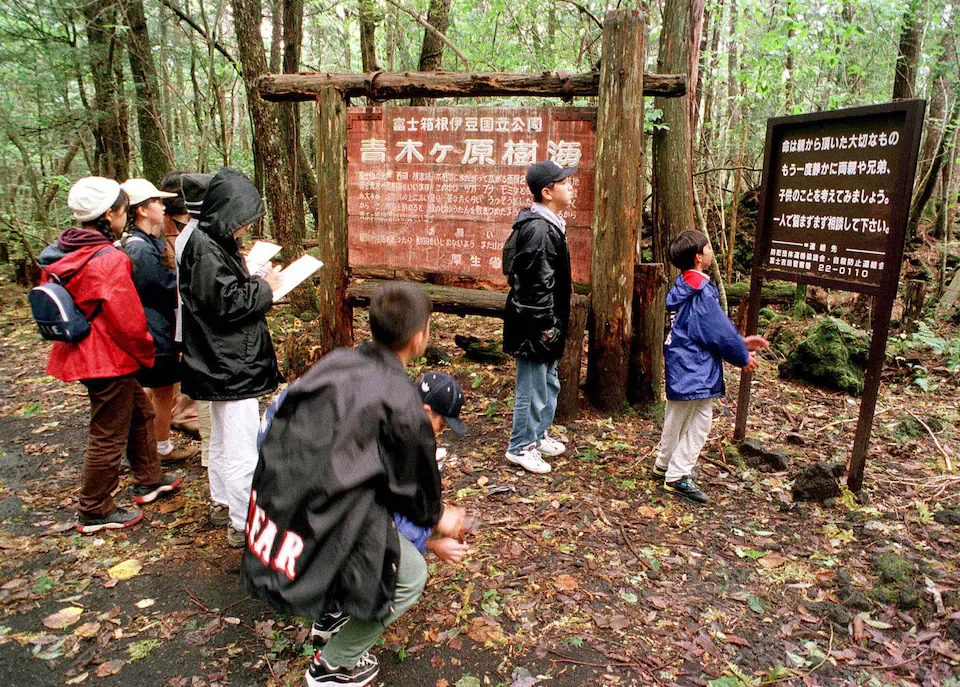
As you step into Aokigahara, you’re immediately enveloped by a sea of green. Towering conifers and broadleaf trees stretch their ancient limbs skyward, creating a canopy so thick that only a dim, ethereal light filters through. The forest floor, a carpet of soft moss and volcanic rock, muffles your footsteps, adding to the eerie silence that pervades the air.
Did you know that Aokigahara spans an impressive 35 square kilometres? That’s roughly the size of 4,900 football pitches! No wonder, the fact that many people would leave ribbons on the trees as it is easy to get lost within this large forest. The forest owes its lush vegetation to the volcanic soil left behind by Mount Fuji’s eruption in 864 AD. Talk about making the best of a fiery situation!
Fun Fact: The extremely fertile soil of made by the volcanic ashes help yield many local crops one of them being the high plains cabbage.
A Geological Wonder
But Aokigahara isn’t just about trees. Beneath your feet lies a network of fascinating caves waiting to be explored. Fancy a bit of spelunking? Then you’re in for a treat!
The Narasawa Ice Cave is a particular highlight. As you descend 21 metres underground, you’ll find yourself surrounded by towering pillars of ice, some over 30 metres high. These icy giants have been slowly forming over centuries, creating a natural refrigerator that locals once used to store food. Talk about a cool discovery!
The Narasawa Ice Cave or also known as Narusawa Hoyoketsu was formed due to the lava about 1120 years ago which later on became recognized as a national monument by the Ministry of Education of Japan in 1929.
If that’s not enough to pique your interest, how about the Fugaku Wind Cave? Stretching for 201 metres, this natural wonder boasts chambers up to nine metres high. With temperatures averaging a chilly 3 degrees Celsius year-round, it’s the perfect spot to escape the summer heat.
Navigating the Sea of Trees
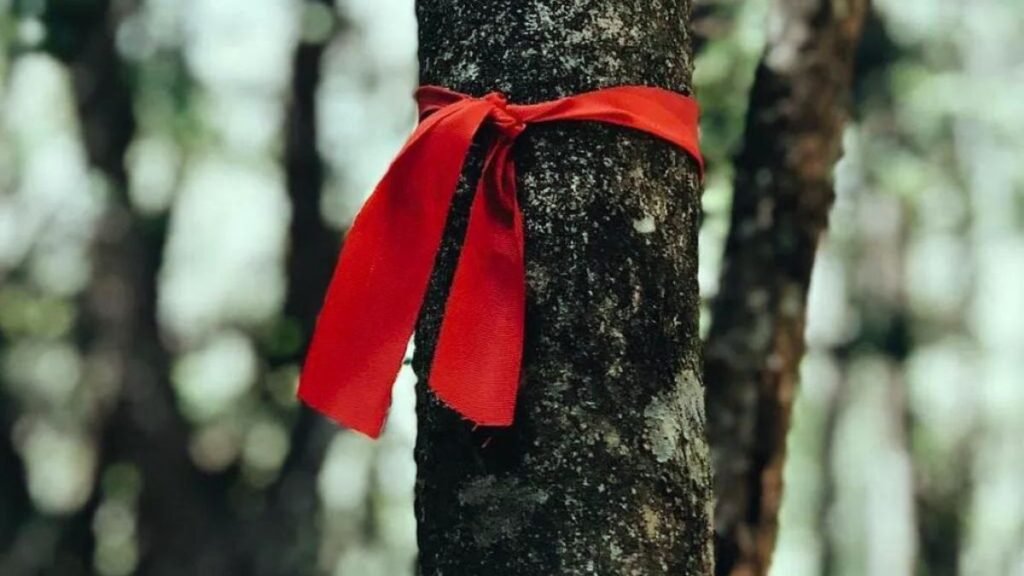
Now, before you go charging off into the undergrowth, a word of caution. Aokigahara’s beauty can be deceptive, and it’s easy to lose your bearings amidst the dense vegetation. The Japanese Tourism Agency recommends sticking to designated trails and avoiding cordoned-off areas.
As mentioned by an article published by national geography , that the ground below is uneven and riddled with small caves, moss-covered roots growing on top of the dried lava that once flowed there. The soil has a high iron content which interferes with GPS and cell phone signals. (Phew! Luckily ,no ghosts)
If you’re feeling adventurous and want to venture deeper into the forest, why not take a leaf out of Theseus’s book? Many visitors tie a blue and white rope to the edge of the path before exploring, creating a modern-day Ariadne’s thread to guide them back. Just remember to remove it when you leave – let’s keep this natural wonder pristine!
A Forest of Legends
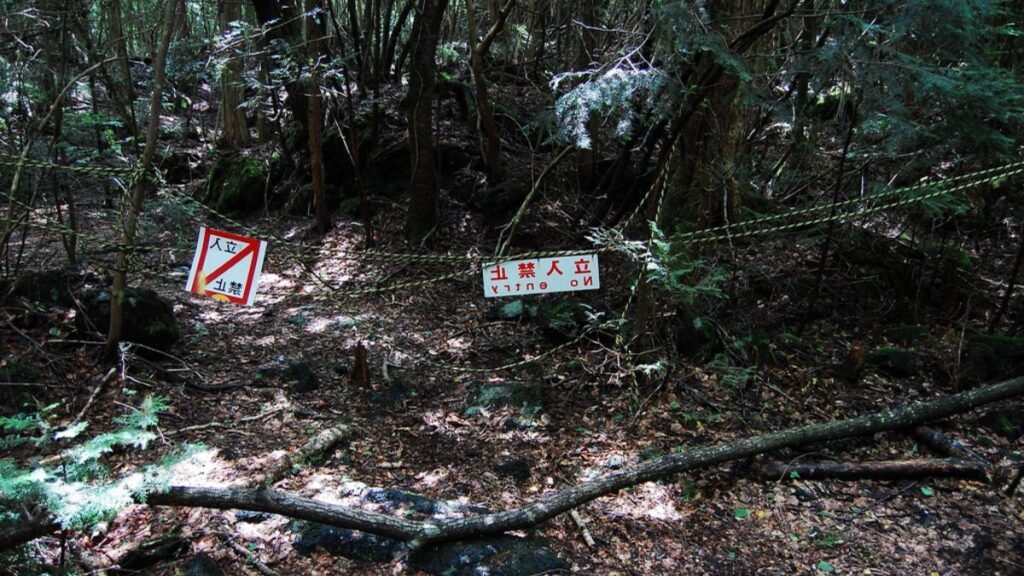
Like many ancient woodlands, Aokigahara Forest Japan is steeped in folklore and mystery. Local legends speak of yūrei, these are the spirits of those who have died in the forest which is a quite familiar concept to the western society also known in simple terms as ghosts, these yūrei are known for haunting the dense undergrowth within these forests. Some visitors claim to have heard blood-curdling screams echoing through the trees. But before you start planning your ghost-hunting expedition, remember that Aokigahara is home to various bird species. Those eerie wails might just be the call of a particularly dramatic feathered resident!
Another Legend that is affiliated with the suicide forest of Japan is that People brought dying loved ones or sick relatives here to leave them here to die on their own, a practice that was known as “ubasute“. Although this has not been proven as there are no statistical data or record to prove this.
Fun Fact: One of the main reason for this forest to get popular is because of the book ” The Complete Suicide Manual” which was released in the 1993 in Japanese language, that discussed all the advantages and disadvantages of every form of suicide .
A Place of Reflection
Unfortunately, Aokigahara has gained a sombre reputation over the years as a site where some individuals choose to end their lives. It’s a sensitive topic that has brought attention to the broader issue of mental health in Japan.
In response, local authorities have taken steps to prevent such tragedies. You’ll find signs at the forest’s entrance with uplifting messages and helpline numbers. The Yamanashi prefectural government has also increased surveillance and trained tour guides to offer support to those who might be struggling.
It’s crucial to approach this aspect of Aokigahara’s history with respect and compassion. If you or someone you know is experiencing mental health difficulties, remember that help is always available. In the UK, you can reach the Samaritans on 116 123 for support, in India you can call on 9152987821.
Preserving Aokigahara’s Beauty
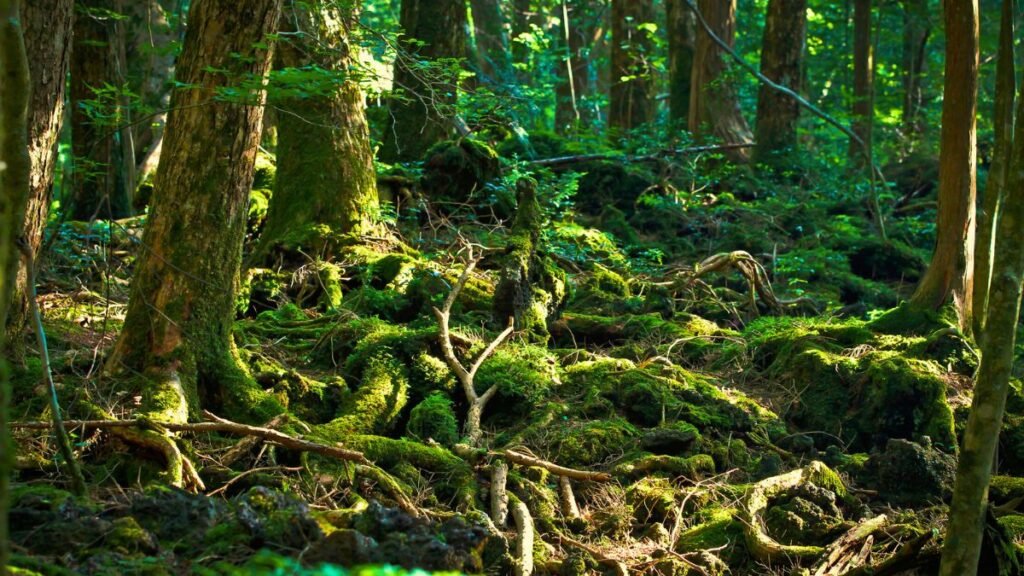
As visitors, we have a responsibility to preserve the natural beauty of Aokigahara for future generations. The local authorities are working hard to combat “dark tourism” and encourage people to appreciate the forest for its ecological and geological wonders.
When you visit, remember to follow the “Leave No Trace” principles. Take nothing but photographs, leave nothing but footprints, and kill nothing but time. And speaking of photographs, while Aokigahara is undoubtedly picturesque, be mindful of the forest’s sensitive nature when sharing on social media.
Planning Your Visit
Ready to explore this enchanting forest for yourself? Aokigahara is located in the Yamanashi prefecture, about 130 kilometres west of Yokohama. It’s easily accessible by public transport or car, making it a perfect day trip from Tokyo.
Over the years the, Aokigahara forest Japan has gained a huge reputation and traction among plethora of hikers, not because of clean air and views but rather more because of its popular dark tourism and the thrilling excitement to walk through a forest which is recognized as haunted by many folks.
Remember to dress appropriately for hiking, wear sturdy shoes, and bring plenty of water. The forest’s unique geology can interfere with GPS and mobile phone signals, so it’s a good idea to bring a physical map and compass.
Conclusion- A Forest Like No Other
As you emerge from the Sea of Trees, you’ll carry with you memories of an extraordinary place. Aokigahara Forest is more than just a woodland – it’s a testament to the raw beauty of nature, a keeper of ancient secrets, and a reminder of our connection to the natural world.
So, are you ready to lose yourself (figuratively, of course) in the mesmerising Aokigahara Forest Japan? Pack your sense of adventure, respect for nature, and perhaps a ball of string – a journey into Japan’s Sea of Trees awaits!

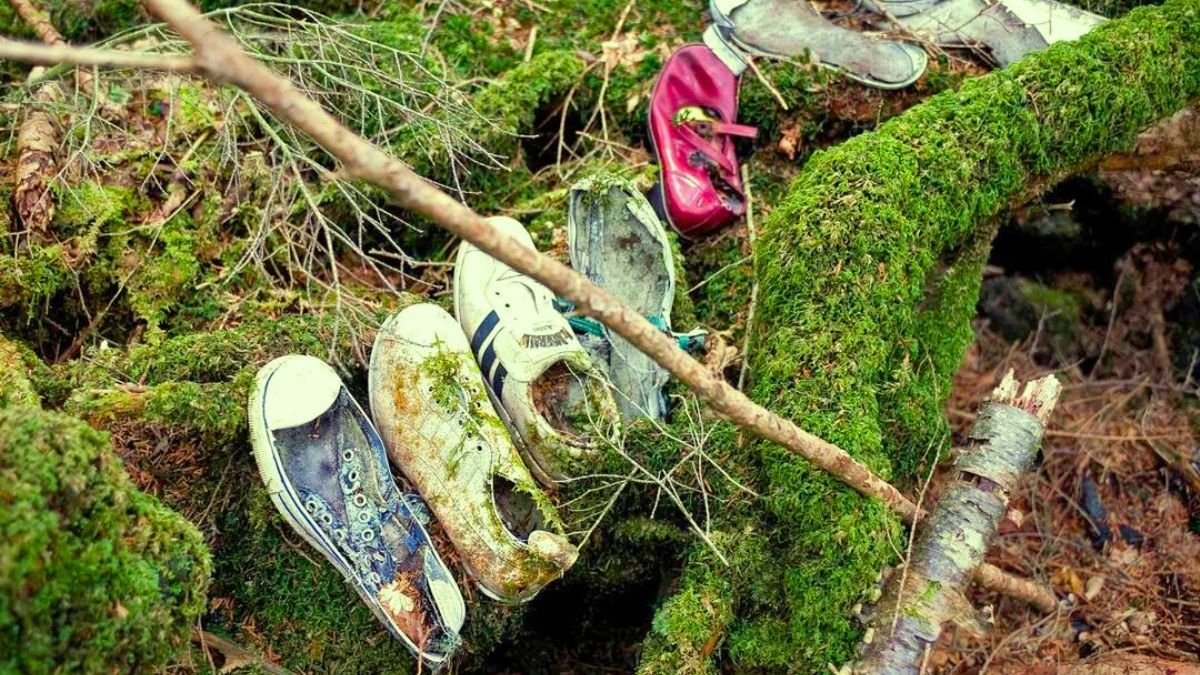

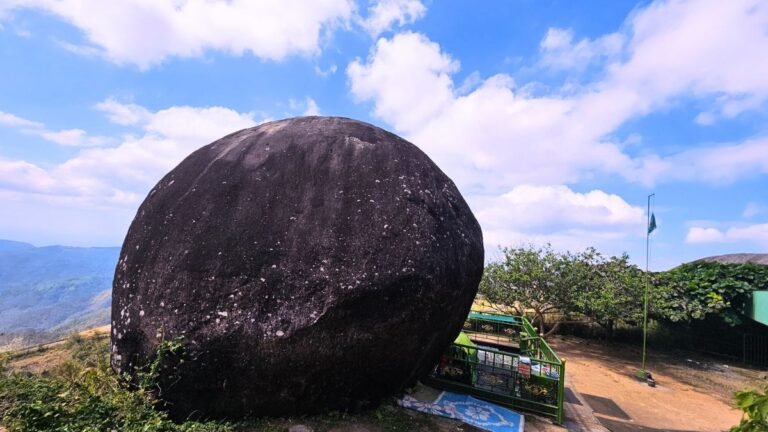

Can you be more specific about the content of your article? After reading it, I still have some doubts. Hope you can help me.
Thanks for sharing. I read many of your blog posts, cool, your blog is very good.
Thanks for sharing. I read many of your blog posts, cool, your blog is very good.
Thank you for your sharing. I am worried that I lack creative ideas. It is your article that makes me full of hope. Thank you. But, I have a question, can you help me? https://www.binance.com/ph/register?ref=B4EPR6J0
Can you be more specific about the content of your article? After reading it, I still have some doubts. Hope you can help me.
Can you be more specific about the content of your article? After reading it, I still have some doubts. Hope you can help me. https://www.binance.com/ar-BH/register?ref=V2H9AFPY
Can you be more specific about the content of your article? After reading it, I still have some doubts. Hope you can help me.
Can you be more specific about the content of your article? After reading it, I still have some doubts. Hope you can help me.